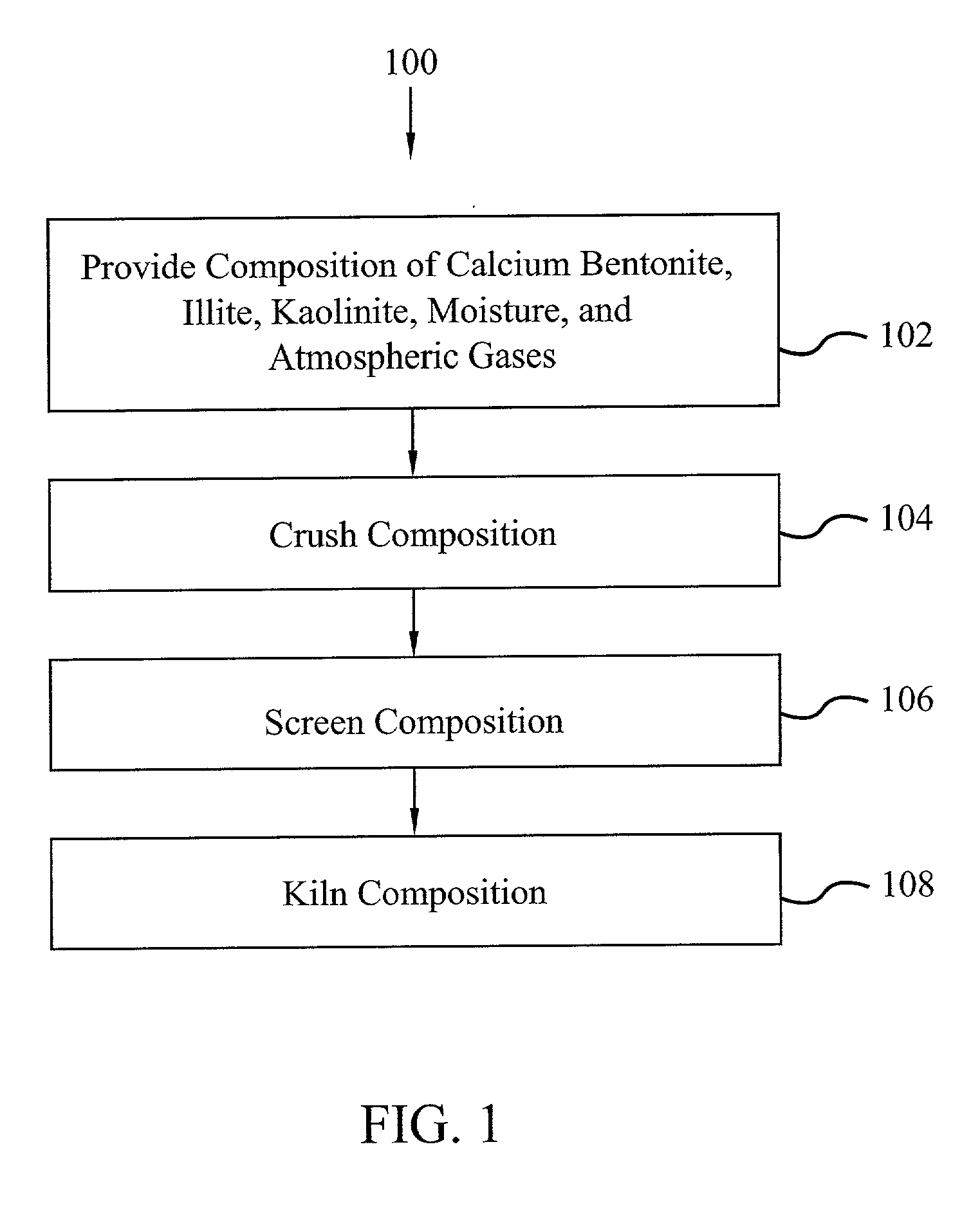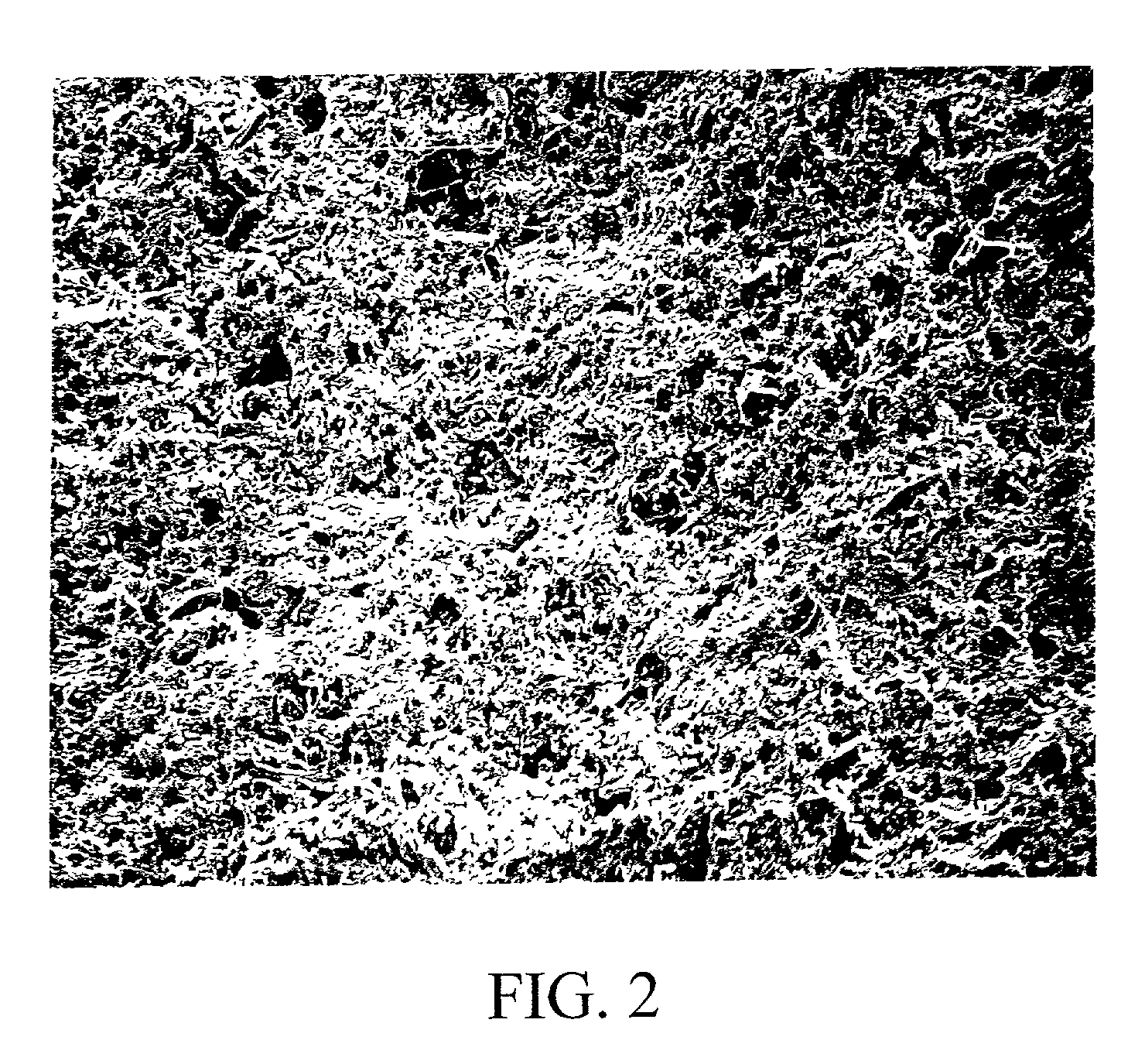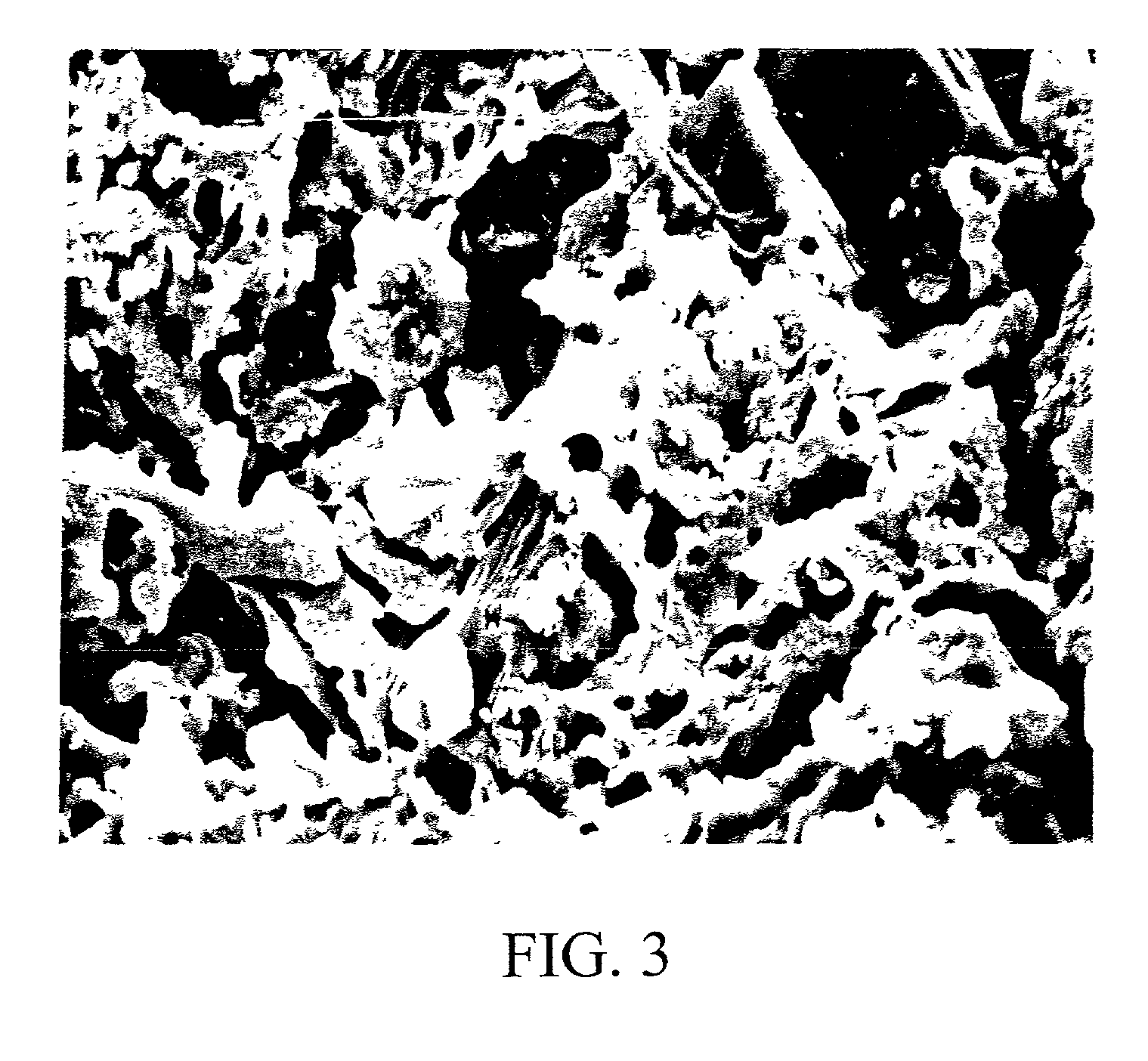However, by way of example, conventional litter materials for horses, such as organic materials, sand, clay, sand / clay mixture, limestone dust, wood, concrete,
asphalt, rubber floor mats, volcanic cinders, baking soda, zeolites, and
potassium dichromate, do not meet these standards and have many problems.
In addition, organic litter is very dusty, both initially, and as horse
manure fines build up.
Furthermore, many animals over time develop allergic reactions to the organic materials and organic materials do not control odors.
In addition, horse stalls are typically overwhelmed with 15-30 gallons of
urine and 10-20 pounds of
manure per day.
Poorly absorbent organic materials are easily overwhelmed by the sheer volume of waste necessitating removal of stall contents.
However, there are limited disposal options for
urine and
manure-soaked organic litter.
Additionally, the costs of
purchasing organic materials for horse litter have increased as other industries compete for these organic materials (e.g.
paper production,
pressed wood boards, etc.).
It is a poor litter choice for many horses due to dust and the potential for colic.
Conventional clay floorings or clay / sand mixture floorings require relatively high maintenance and do not provide dust free environments because of the inadequate
hardness of the clay materials.
Conventional clay materials are not
long lasting, and attrition leads to additional dust as the clay material ages in the stall.
In addition, packed clay floors tend to become slippery when wet, and maintaining level clay floors is difficult and
time consuming.
Furthermore, when horses urinate and then paw or move about the stall, holes and pockets develop in both the clay and clay / sand mixture floorings.
Stall cleaning becomes difficult and drainage and
odor problems often result.
However, as installed, this flooring is not safe for use around people or horses.
Lime flooring often has the same colic problems associated with sand, clay, and clay / sand mixture floors.
A horse fed off
lime flooring may develop damage to its mouth,
throat, and internal organs.
Horses may also develop rashes from contact with
lime.
Wooden floors are expensive, require
chemical treatment to retard decay, are slippery when wet, and require additional litter to provide sufficient
cushioning for horses and to absorb
urine and avoid odor.
Concrete or
asphalt stall flooring have very poor drainage, are often cold and slippery, and additional litter is necessary to absorb urine and avoid odor, traction, and increased leg problems.
Rubber stall mats, rubber paving bricks, and
fiber-reinforced
polyethylene interlocking blocks also are expensive and also require additional litter to absorb urine and avoid odor.
Horse litter produced from volcanic cinders (siliceous materials) is very dusty to begin with, and even more dust is created by attrition because large closed pores (fossil gas bubbles) make cinders soft with a low crush strength, thereby providing a respirable
silica dust hazard.
The large closed pores on a
cinder do not have sufficient chemical-electrical attraction and large surface areas to absorb urine and avoid odor.
However, it has almost no absorbency, which would require large amounts to be used in a stall.
Baking soda and 15-30 gallons of urine would become sticky and contribute to a stall
moisture problem.
Most zeolites are absorbent, but lack the degree of
hardness necessary to insure that they will not
grind to dust under a horse's hooves.
However, although
potassium dichromate reduces odors, it is not hard (grinds to dust under a horse's hooves) and is toxic in certain situations.
Depending upon the weight of the animal, inadequate hardness will result in the litter breaking down to
powder / dust as it supports the animal.
Without the designed absorbency, wicking properties will not be maximized and the animal litter will not function to quickly remove
moisture from the stall or
litter box environment.
 Login to View More
Login to View More 


